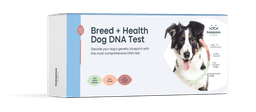Dogs rely on their noses all day long. They explore the world around them by sniffing the ground. They sniff out food and recognize people using their noses. The nose of the dog is a powerful tool. It helps them in ways we can’t fully imagine or understand. PetMD shares a fascinating fact about their noses: Canines inhale and exhale at the same time using their wonderful noses.
The Anatomy of a Dog’s Nose
External Nose Structure
The dog snout is made for more than just looking cute. A dog’s nostrils (called nares) can move independently. It allows them to figure out which direction a scent is coming from. Their nose pad is covered in tiny ridges. These ridges give it that familiar bumpy texture. But that’s not all. These help them trap scent particles. As a result, their sense of smell gets even sharper and better.
Internal Nose Structure
Inside, things get even more impressive. The dog nose anatomy includes a labyrinth of bones and tissue. All of these are designed to process different smells. Unlike humans, dogs have up to 300 million olfactory receptors in their noses. Humans only have about 6 million. The long nasal passages in a long nose dog allow them to capture more scents. This makes them incredible trackers and great hunting buddies.
The Jacobson’s Organ (Vomeronasal Organ)
This organ is hidden deep within the nose. It is responsible for detecting pheromones. It helps dogs pick up on chemical signals from other animals. It can sense a potential mate or read the emotional state of another dog. The Jacobson’s organ truly plays a vital role in their social behavior. As explained by the VCA Animal Hospitals, this amazing organ helps the dog pick up scents that are often undetectable and basically odorless. This organ’s interaction with the nerves is fascinating.
How a Dog’s Sense of Smell Works
The sense of smell in dogs contrasts greatly from human sense of smell. When they sniff, they draw air into a separate nasal passage. This one is solely for processing smells. This unique system lets them analyze odors with remarkable precision. Even separate smells that are stacked on top of one another can be distinguished by canines. This is why dogs can detect the smell of your lunch long after you're done with it.
Unique Functions of a Dog’s Nose
Temperature Regulation: Why a Wet Nose Matters
Ever notice how a dog's nose is usually wet? This moisture helps them regulate body temperature. When they lick their nose, it evaporates and cools them down. This is pretty similar to the sweating mechanism that works for our bodies. A wet nose is also more efficient at capturing scent particles. Dry nose in dogs often means a health problem. Never ignore a dry nose.
Tracking and Hunting Abilities
Tracking and hunting has been a job for dogs for centuries. There is a good reason behind this practice. Even the faintest trail of smell can be picked up by the magnificent nose of the dog. It may be undetectable to everyone else but the canine will sense it. A bloodhound can follow a scent trail after several days of being left. The reason why dogs are trusted with search and rescue missions is easy to comprehend, as no other animal’s tracking abilities compare to theirs.
Scent Marking and Social Communication
Canines use their noses to communicate. When they sniff around a fire hydrant or a tree, they’re not just being curious. They’re gathering social information. Through scent marking, dogs tell each other about their age, gender, and even mood. It’s their version of leaving a note for a friend. Smells play a significant role in a dog’s social life.
Using the Nose to Detect Emotions and Illnesses in Humans
Dogs can detect more than just physical things. They can sense emotions. They pick up on changes in body chemistry. They are able to tell if we are anxious or afraid because of this. Some dogs can even alert their owners just before a seizure takes place. They can also detect cancer. This showcases their incredible ability to pick up on subtle chemical changes. No other pet has this amazing talent. It truly makes them man’s best friend.
Interesting Facts About a Dog’s Nose
A dog’s sense of smell is up to 100,000 times stronger than a human’s. This is because of all the extra olfactory lobes they have. They also have a special organ in the nose to help pick up even the faintest of smells.
A dog's ability to smell is somewhat determined by the curvature of their snout. A dog with longer snouts will be more adept at picking up scents. A canine with a shorter snout will still be a great sniffer. Yet not as good as some others.
Bloodhounds and beagles are known to be natural-born sniffers. Pugs might not be as scent-oriented due to their shorter noses. In the end, it all comes to the shape and length of the snout.
Frequently Asked Questions
How far can dogs smell? Dogs can smell things from up to 12 miles away. Isn’t that amazing? It depends on wind and terrain conditions as well.



